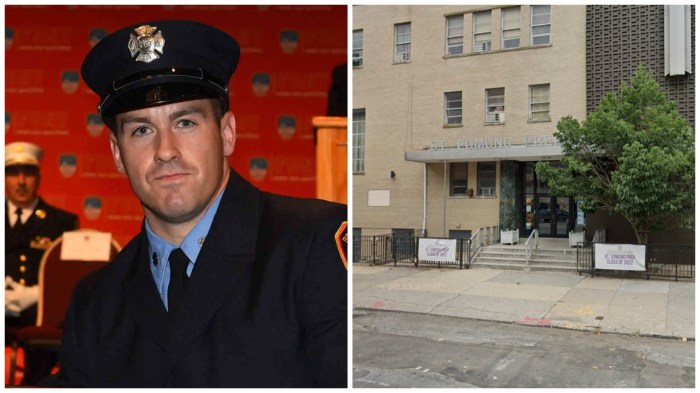Most Americans agree there ought to be a minimum wage. You don’t hear much argument that it should be abandoned, or that it should be lowered.
The debate always centers on whether the minimum wage ought to be increased, when and by how much. Critics question whether doing so is a “job killer,” or if a higher minimum forces companies to raise prices, hurting the purchasing power of low-income earners. But you don’t hear too much about how the purchasing power of minimum-wage earners is reduced by the ravages of inflation.
Rigorous studies show that small, steady increases of the minimum wage are not big job killers. And they say that while price increases caused by wage increases do raise costs for minimum-wage workers, the workers are still better off.
These arguments over elevating the pay floor for entry and often dead-end jobs should not continue endlessly, regularly twisting our federal, state and local politics into knots.
In New York, let’s settle it once and for all.
The deadline for the 2015-16 state budget is just over two weeks away. Once again, the minimum wage is at the heart of a tug-of-war going on now in Albany. Gov. Andrew M. Cuomo seeks small raises, Assembly Democrats want bigger ones, and Senate Republicans oppose any hikes.
The state’s minimum wage stood still at $7.25 an hour from 2009 until the end of 2013. Then a three-step increase was agreed to in Albany, but only after a tough battle: $8 in 2014, $8.75 this year and $9 in 2016.
Now Cuomo has proposed an increase to $11.50 in New York City in December 2016, and $10.50 elsewhere.
The Assembly wants much more — a raise to $15 in the city, Long Island and Westchester by 2018, and $12.60 elsewhere. The Assembly also wants to index the minimum to inflation.
New York Mayor Bill de Blasio wants a raise to $13 an hour in the city in 2016. He has asked the city’s private sector employers to voluntarily go that high even if Albany won’t.
Each argument has merit and this is how lawmakers should put it all together:
The minimum wage for the city and close suburbs should be higher than elsewhere in the state because it costs more to live here. Cuomo’s more reasonable proposal for $11.50 by the end of 2016 addresses that and should be extended to New York City’s suburbs.
Outside the New York City area, the minimum wage has kept up with inflation, and the planned hike to $9 in 2016 is enough for now.
Most important, the minimum wage should be tied automatically each year to the rising cost of living, the same way Social Security is. This ensures that the wage’s purchasing power is not eroded by inflation.
The first federal minimum wage — painfully low at 25 cents an hour (that would only be $4.32 an hour in 2014 dollars) and fairly limited in which jobs and employers it applied to — was passed in 1935. It was then overturned by the Supreme Court, part of President Franklin D. Roosevelt’s struggles in general with conservatives over labor laws, Social Security and government programs. The minimum wage became law as part of the Fair Labor Standards Act in 1938. By 1956, it had reached $1 an hour and was more broadly applied. Today, adjusted for inflation, that $1 an hour would be $8.70, not far below the $9 minimum wage coming in 2016.
New York’s minimum wage was generally the same as the federal minimum until 2000, but it has been higher than the federal minimum since.
Generally, New York’s minimum wage has kept pace with inflation. But twice, from 1981 to 1990 and from 1991 to 2000, there were nine-year lapses between hikes. Adjusted for inflation, the value of the minimum wage fell dramatically in those periods, representing far less purchasing power.
Having a minimum wage that workers can live on, and tying subsequent increases to inflation, shouldn’t be controversial. Do it and let that debate fade into history.

















